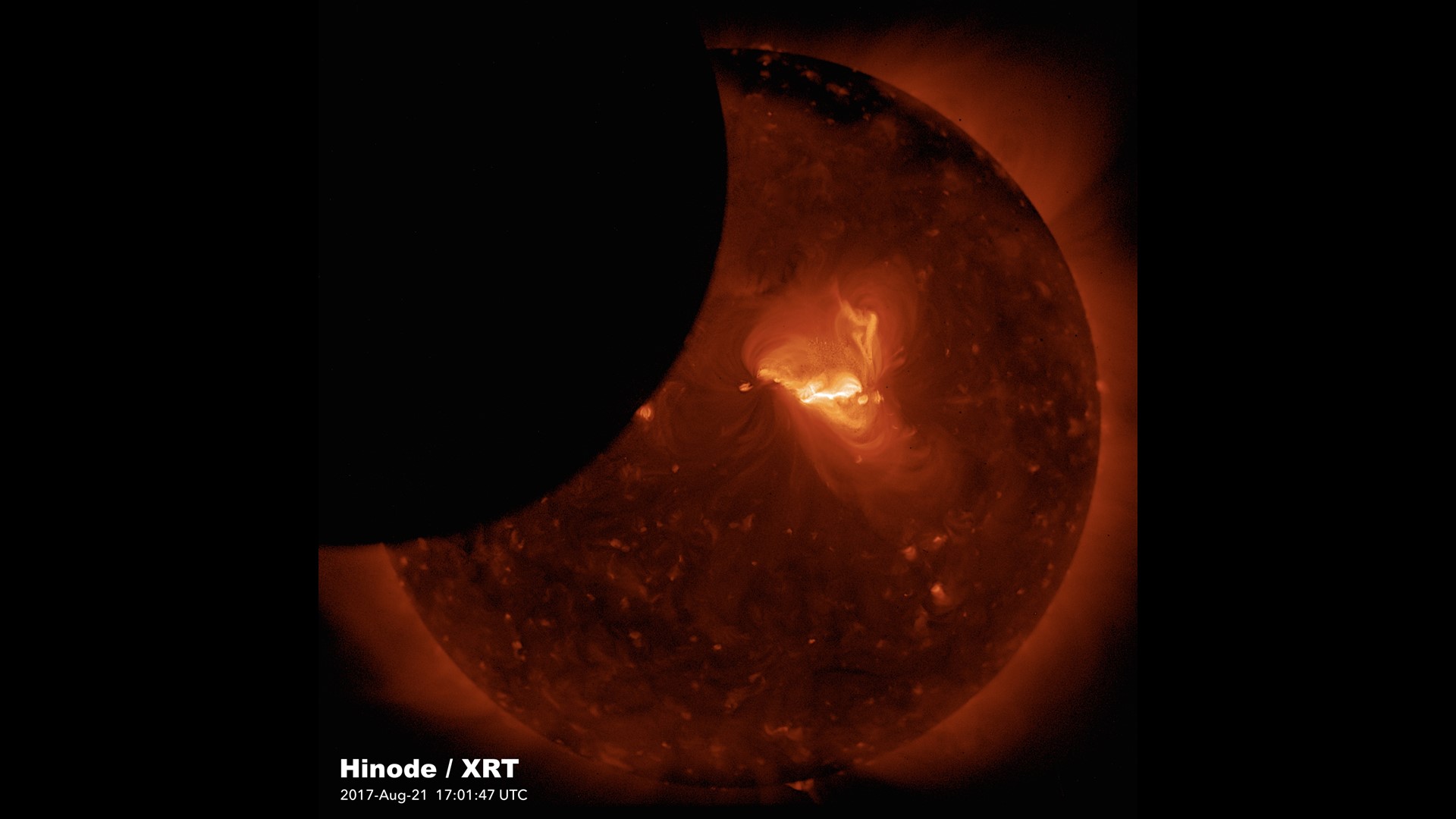PORTLAND, Maine — Grab your special eclipse glasses, a tent, and a jacket—the total solar eclipse is coming to Maine soon.
On April 8, the sun’s rays will be blocked out by the moon’s shadow in the afternoon. The path of totality goes right over western and northern Maine and will bring a sight that many have not seen in their entire lives.
All we need is a clear sky, and magic will happen from above.

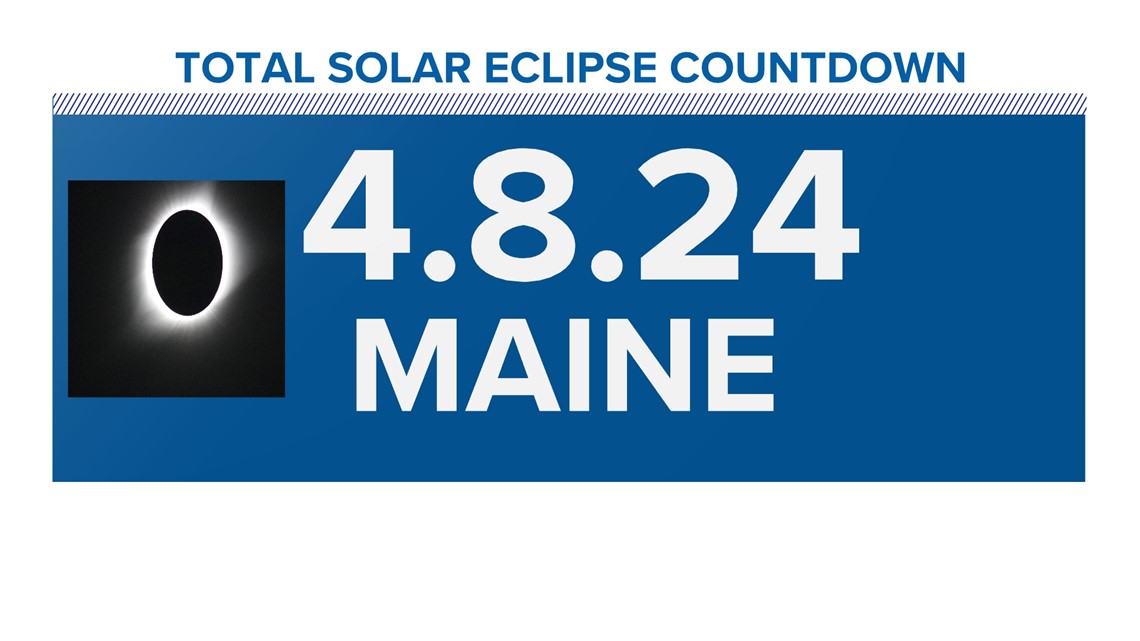
The anatomy of a solar eclipse begins with the sun’s rays blocked by the moon in front of the Earth. During Penumbra, there is a partial shadow or partial eclipse, and most of southern Maine and Downeast will see this.
But the Umbra, or full shadow, will lead to total darkness for western and northern Maine, and that’s the path of totality.

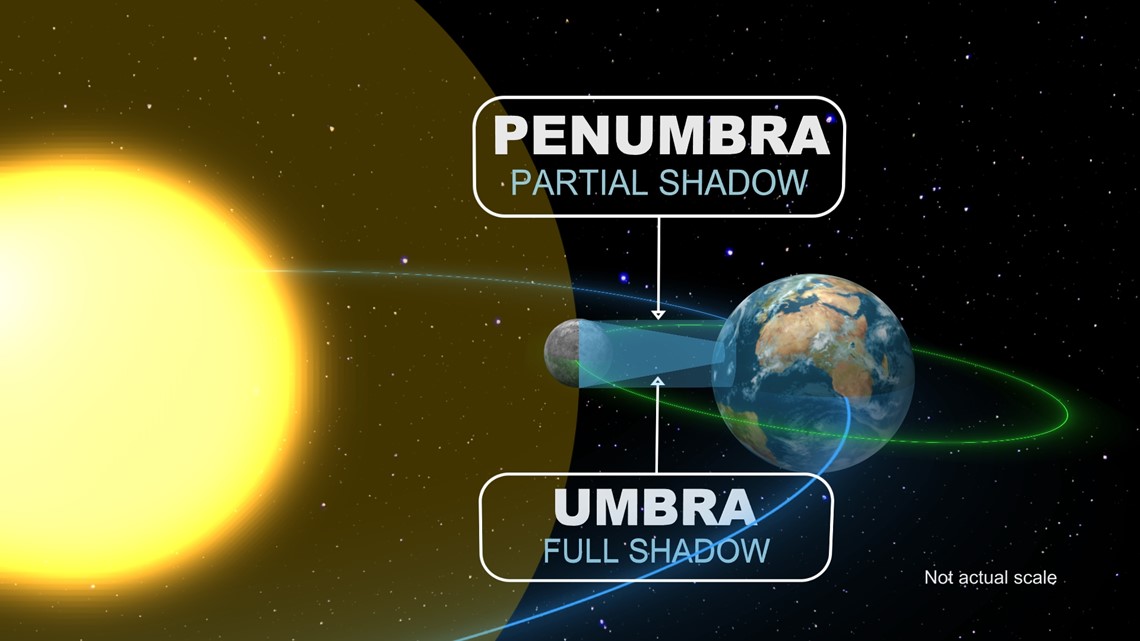
We can’t forget about safety tips when viewing an eclipse because you can do serious damage to your eyes. So, heed these warnings:

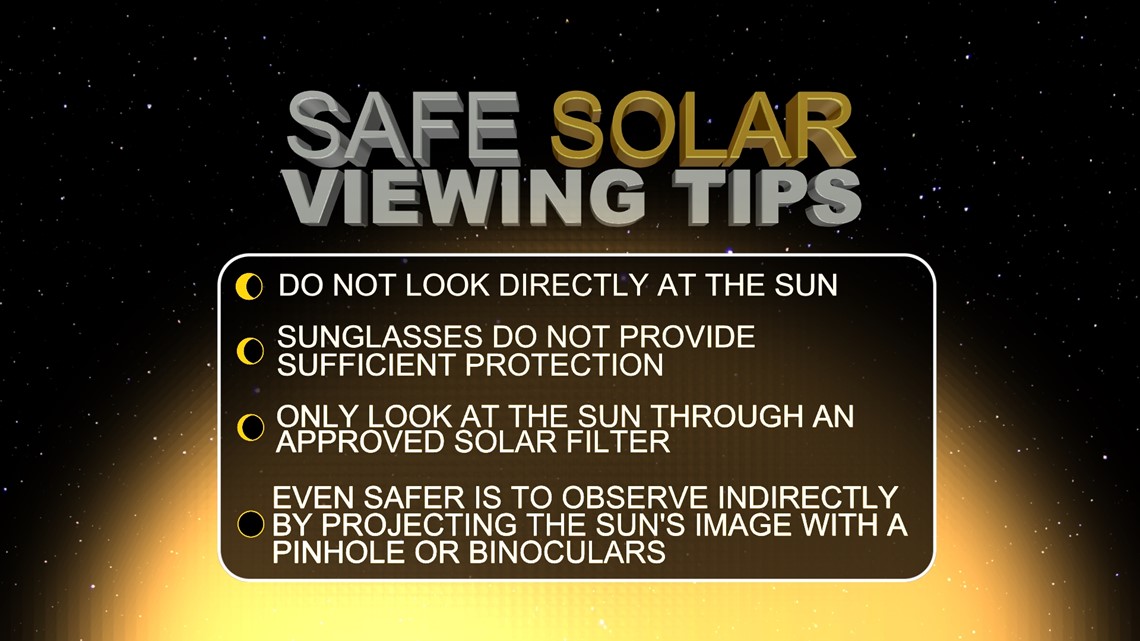
The path of totality will begin over southern Texas and then move through the mid-south and Ohio Valley. It will bend over western New York and into northern New England with a final stop in Maine around 3:30 p.m.

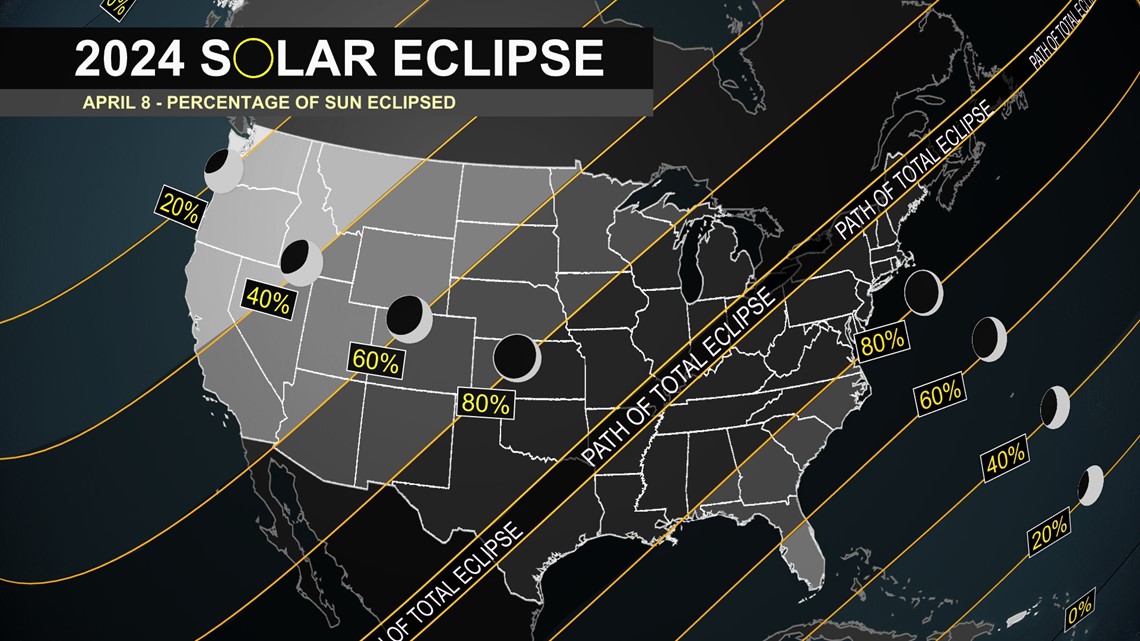
Rangeley will be one of the first places to see the eclipse begin after 2 p.m. By 3:30 p.m., a maximum eclipse will be occurring in the western mountains.


Jackman will have to wait one extra minute for maximum eclipse at 3:31 p.m.

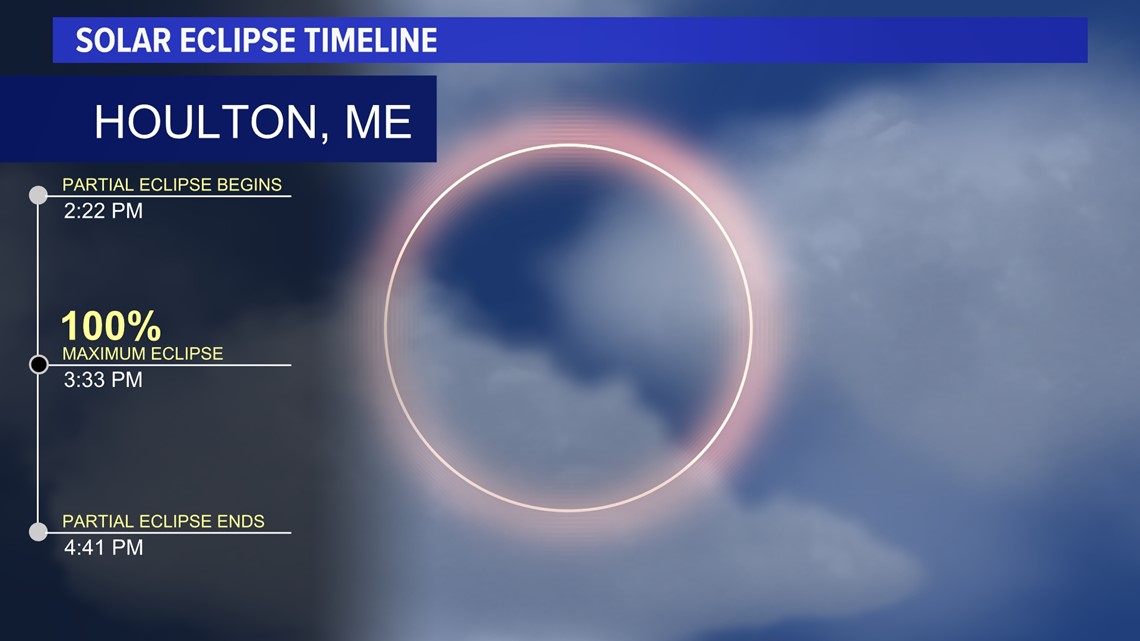
By 3:32 p.m., Dover-Foxcroft will be in totality. The last stop for the eclipse is Houlton at 3:33 p.m. at 100 percent maximum.
Here’s a look at the shadow of the Moon or Umbra over northern Maine on Monday afternoon.

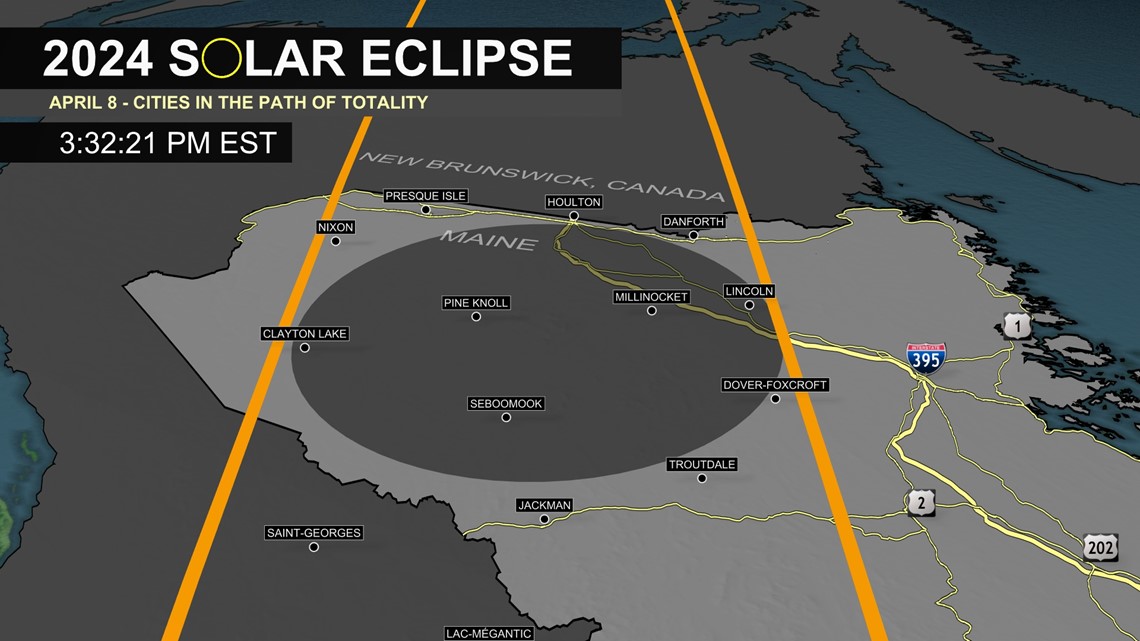
Even places like Kittery, Lewiston-Auburn, Bangor, and Eastport will see around 90 to 95 percent of the eclipse from 3:30 p.m. on.

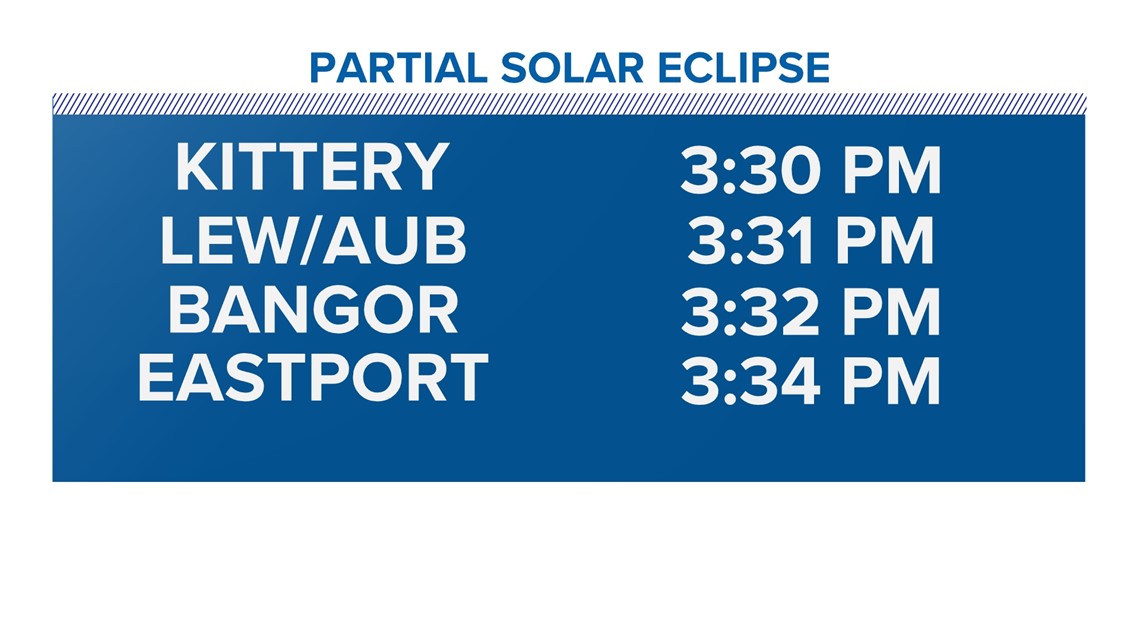
In this next section, I will spotlight Houlton from start to finish. If the sky is clear, this will be a life-changing experience:


First contact is the moment when the edge of the moon touches the edge of the sun. This will happen at 2:22 p.m. in Houlton. The moon will then "bite" the sun, as the eclipse starts to become visible. As the moon blocks out the sun’s rays, solar energy will start to decrease at 2:50 p.m.

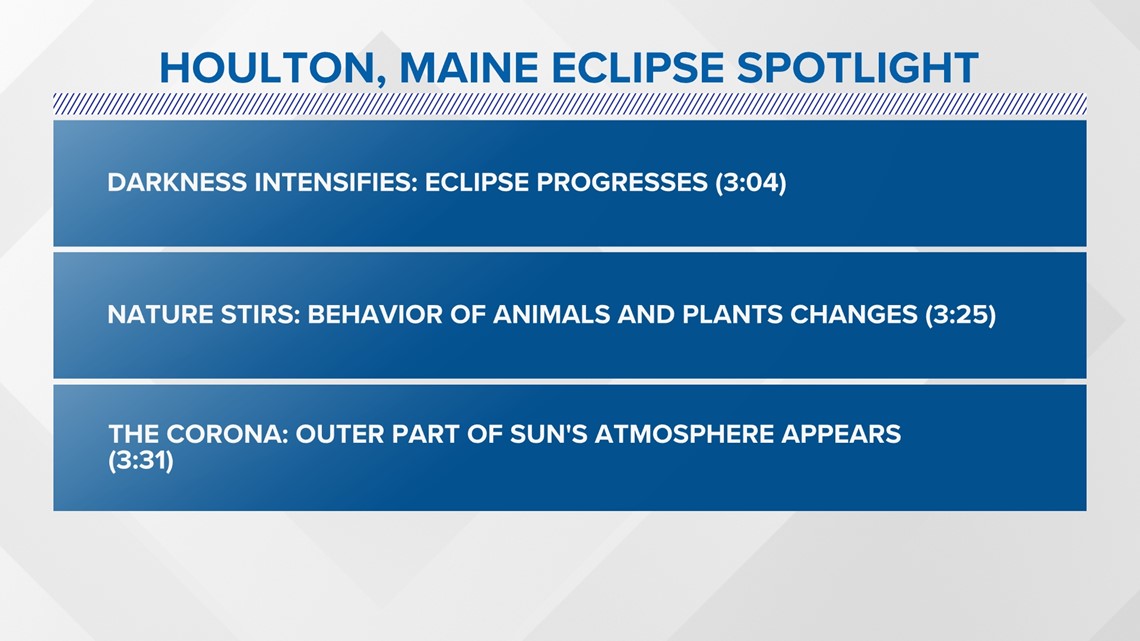
One of the coolest things to happen during an eclipse is the effect on nature.
This eclipse will be no different. At 3:25 p.m., the behavior of animals and plants will change. You will see bees go back into the hive. Cats normally won’t care. Dogs will be impacted, but not as much as with fireworks.
At 3:31 p.m., the corona, or outer part of the sun’s atmosphere, appears.

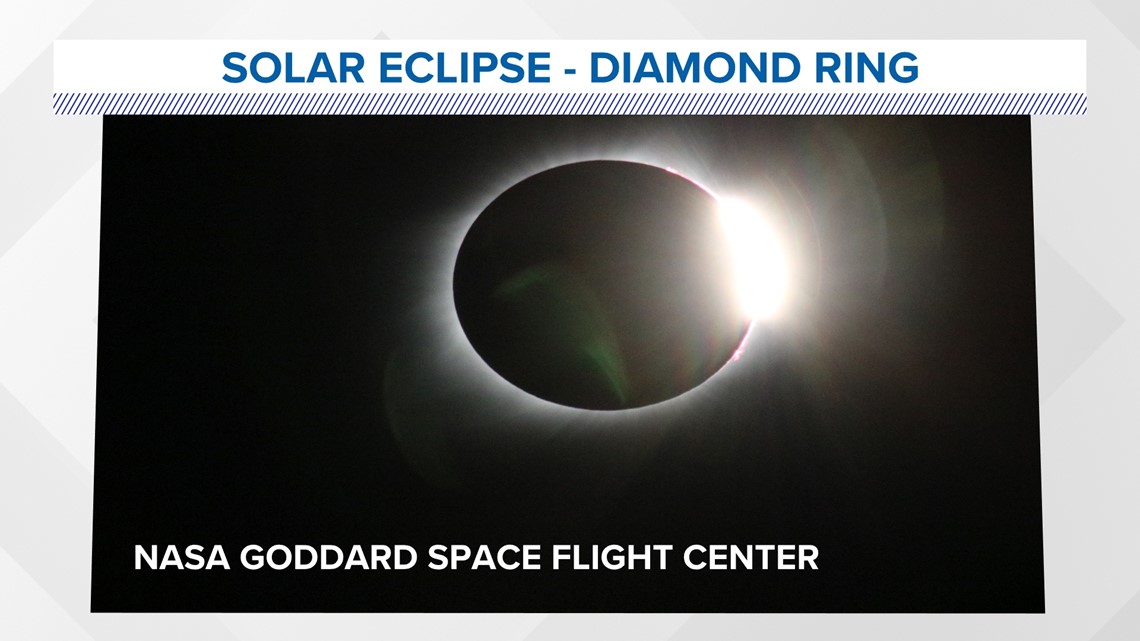
The first of many life-changing events begins now, as the diamond ring appears. This will be like a jewel in the sky and is a sight to behold.

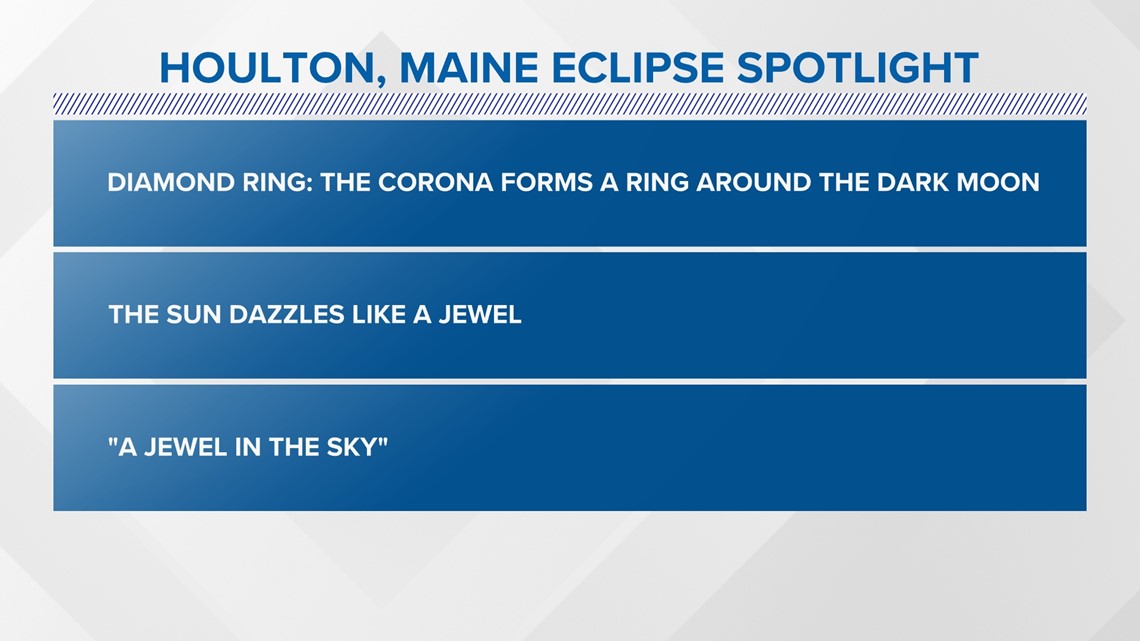
Next, we will see Baily’s Beads, which happens just before totality. Beams of sunlight will stream through the valleys on the moon.

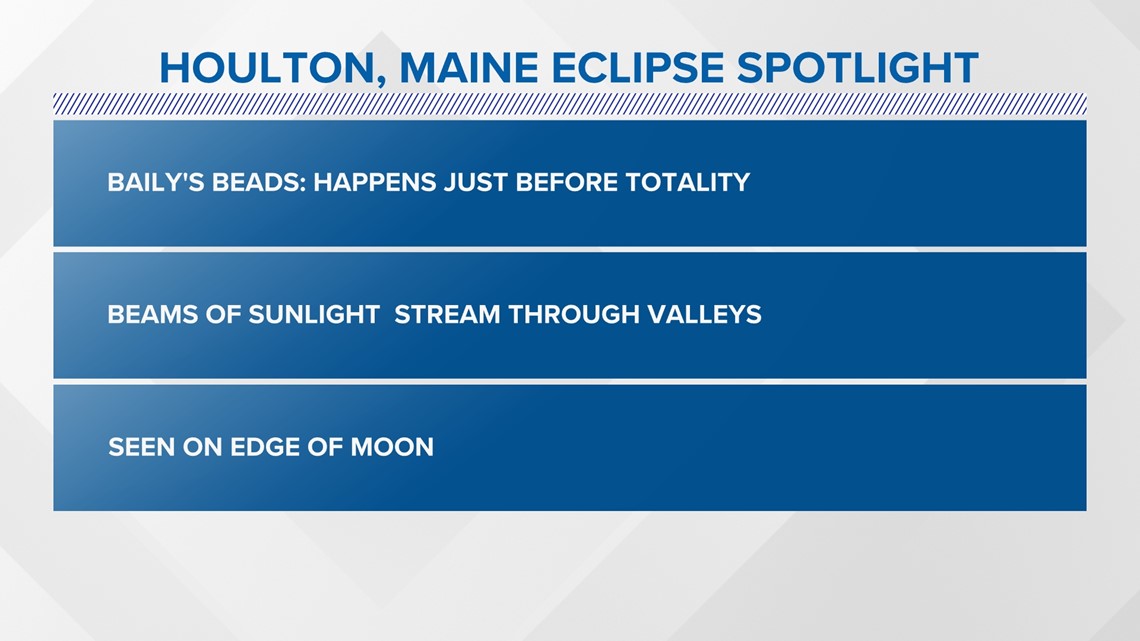

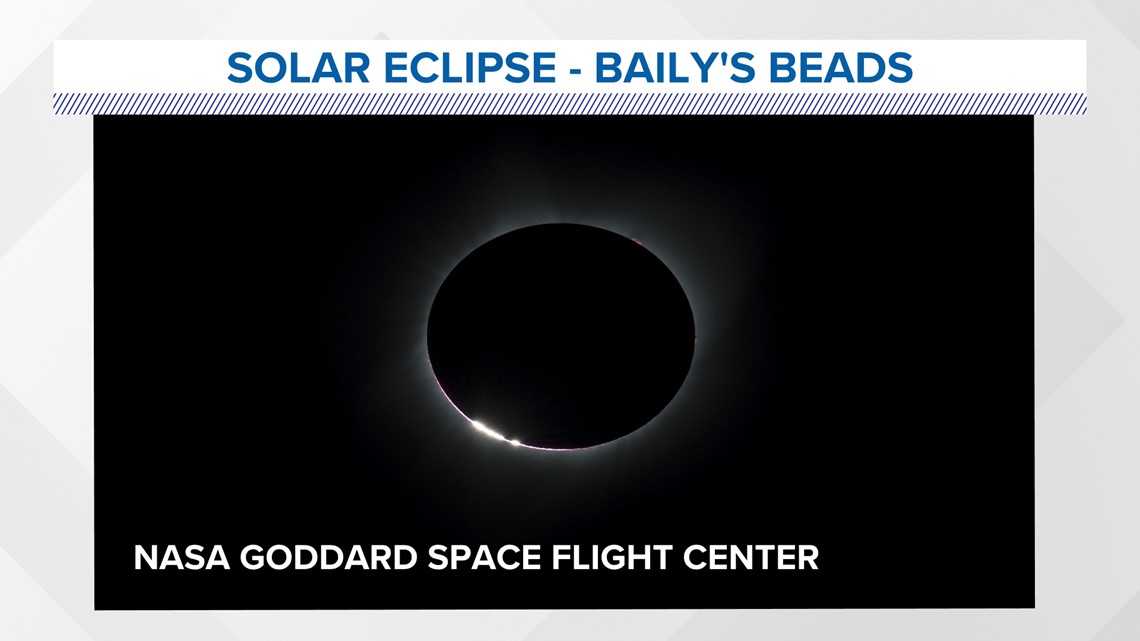
This will get very intense now, as the Chromosphere, a thin, red layer of the sun’s atmosphere, begins to briefly appear.


You will be able to look up and see reddish, tongue-like prominences poke out.

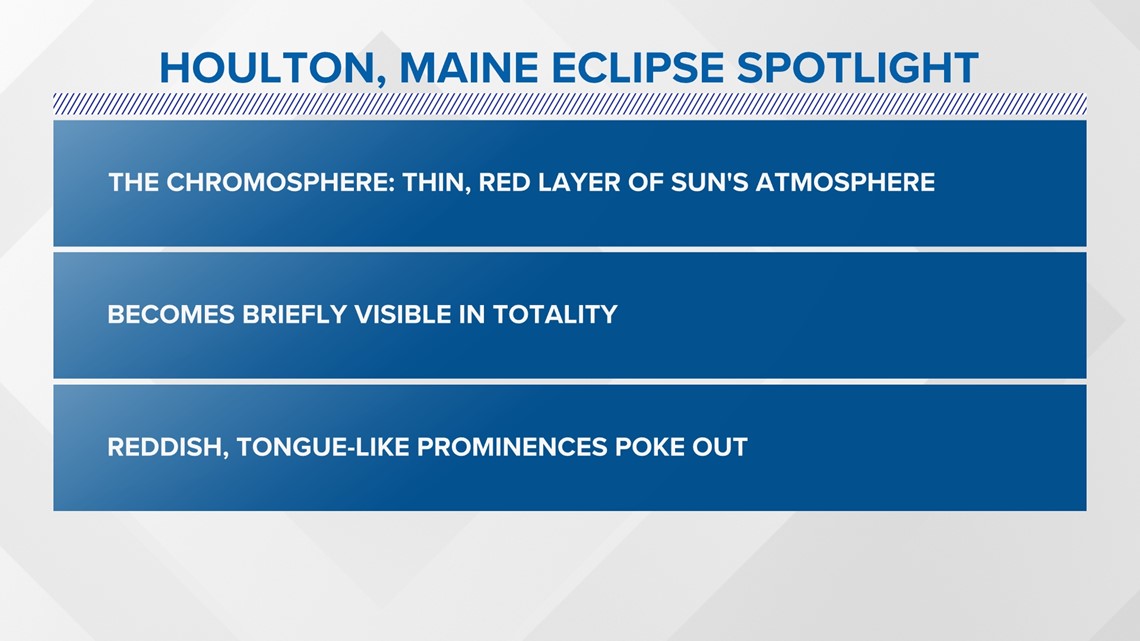
It’s a life-altering event for anyone who has never seen this. I saw it in 2017 during my time in the upstate of South Carolina.


Now we are entering totality, and the full corona is visible with total darkness over northern and western Maine after 3:33 p.m.

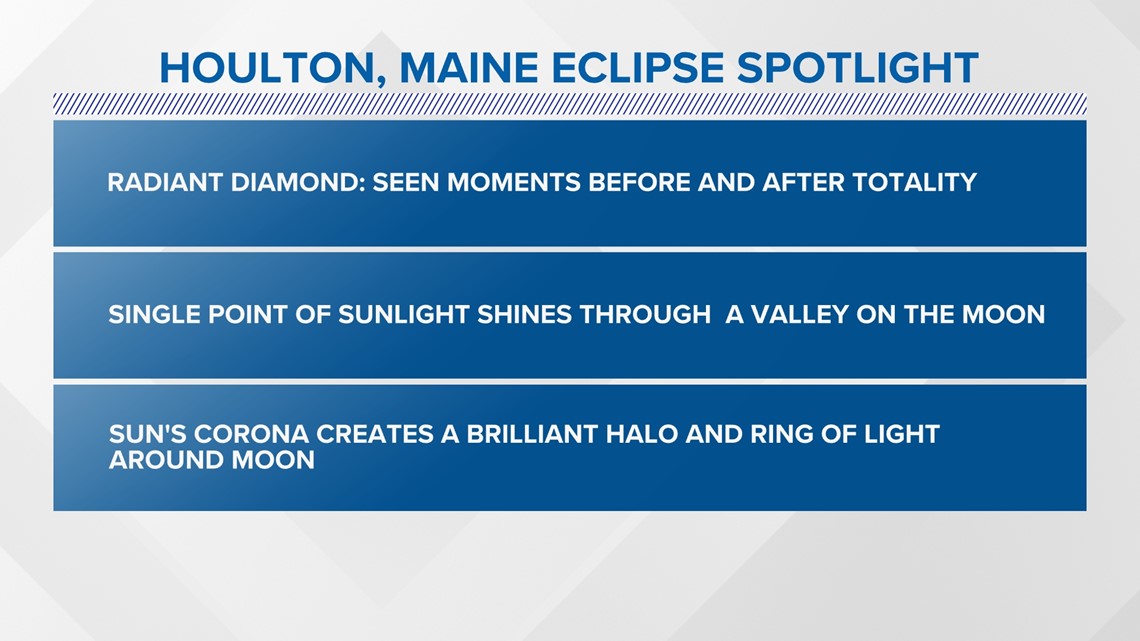
Peak eclipse is happening now, as the radiant diamond appears. It’s seen in the moments before and after totality. A single point of sunlight shines through a valley on the moon. The sun’s corona will create a brilliant halo and ring of light around the moon.
This is something you don’t want to miss. It will last a lifetime.

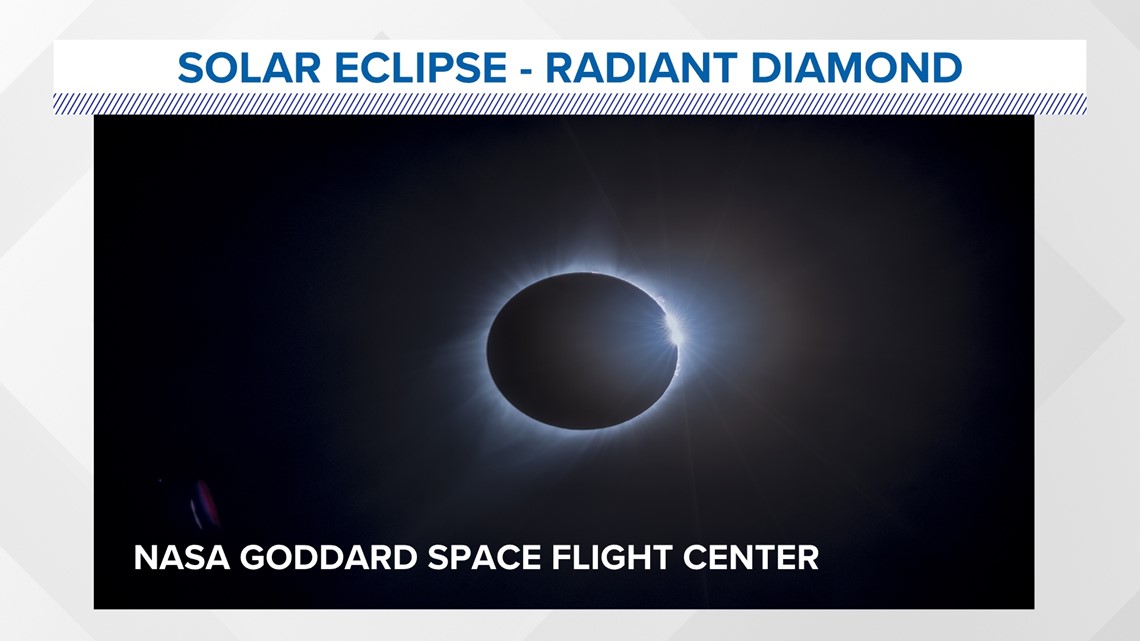
Totality will end once the edge of the moon exposes the sun.


This is called third contact, and your safety glasses need to be back on before this.
Now, we go in reverse as the Chromosphere reappears, followed by Baily’s beads, and the diamond ring.

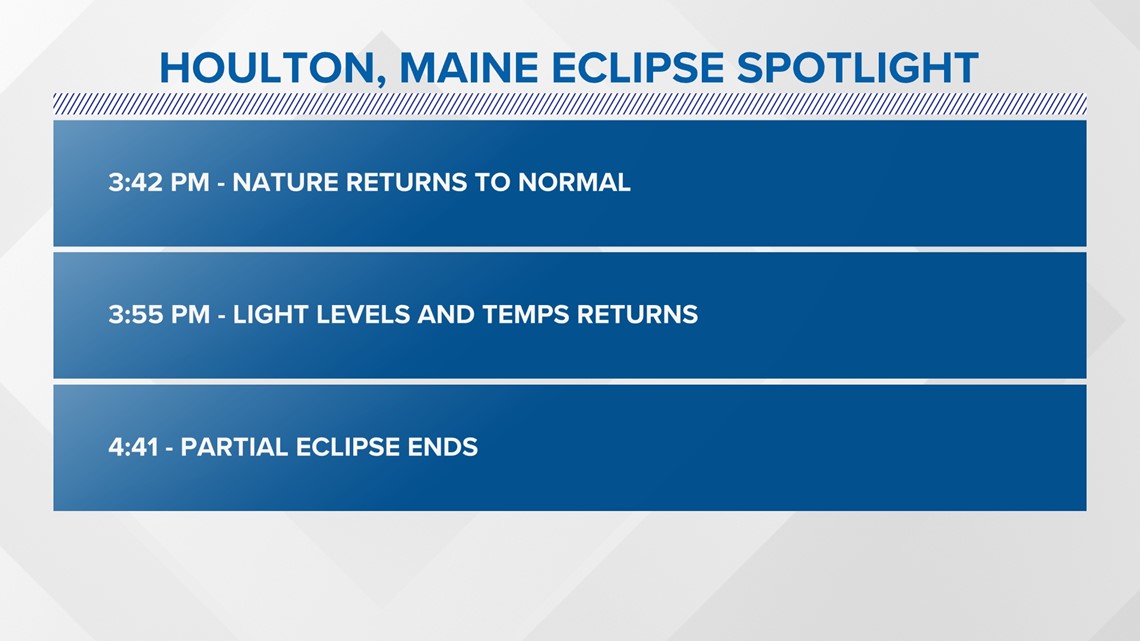
At 3:42 p.m., nature returns to normal, and at 3:55 p.m., light levels and temperatures return to normal.
At 4:41 p.m., the partial eclipse is over.

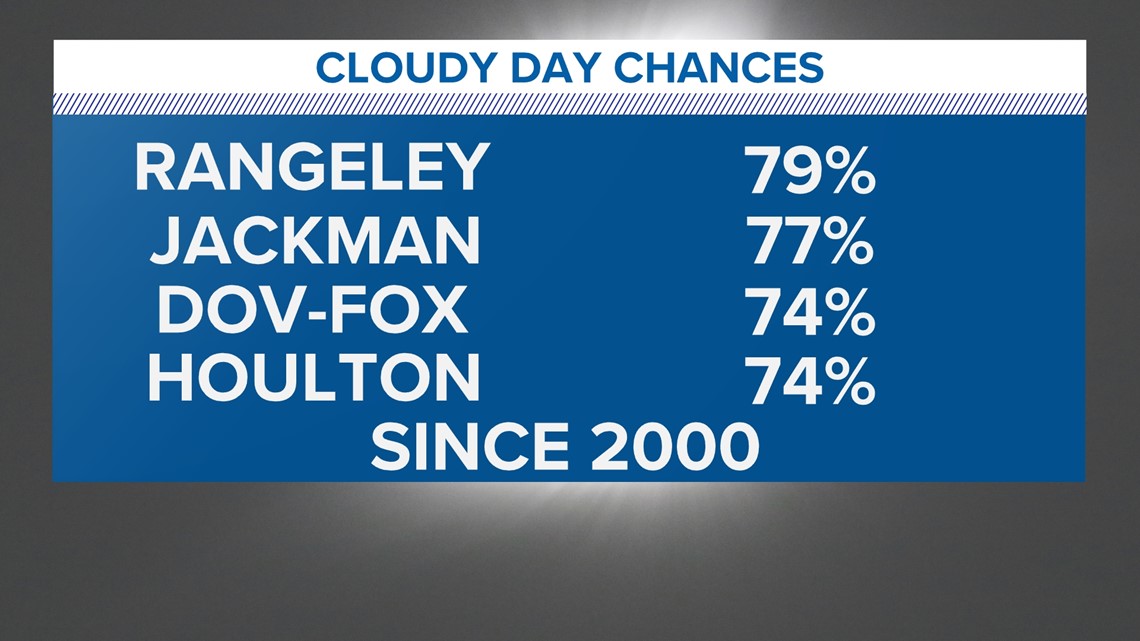
We must talk about cloudy day chances, though. Even though the eclipse will be a huge event for Maine, a lot of that hinges on whether or not we see a clear day.
Unfortunately, up to 79 percent of the time, it has been overcast in western and northern Maine on early April days since 2000.

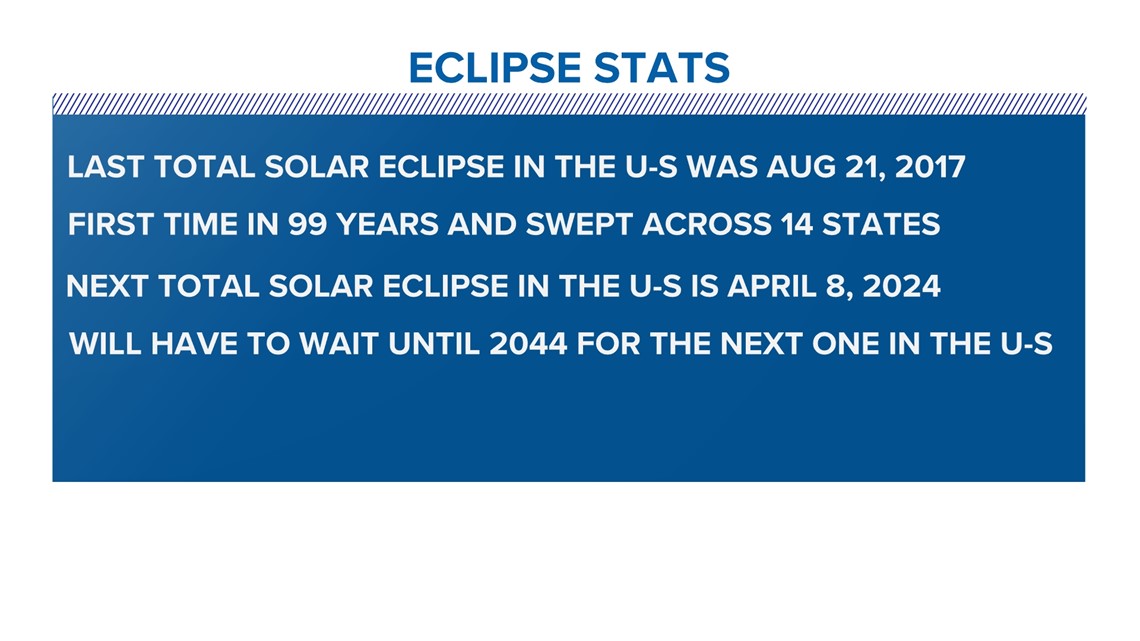
The last solar eclipse in the U.S. was August 21, 2017. It was the first time in 99 years and swept across 14 states. I was in South Carolina and I can tell you it was a magical day.
We will have to wait until 2044 for the next total solar eclipse in the U.S.
Follow along for more weather blogs and pizza discussions.



